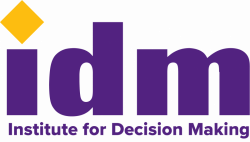Keeping the Plan Alive
Keeping the Plan Alive
As planning experts, we at IDM consider the shelving of strategic plans as the greatest threat to the work of the many planning team members, community leaders and others who give time, talents and treasure to the development of the strategic plan. The plan is developed, but then the implementation stalls. Has this happened in your organization or community?
IDM has been adding “implementation follow up meetings” as a normal course of our strategic planning services. Serving as a third-party neutral facilitator, we ask the plan’s implementers about their progress on actions, help troubleshoot challenges and barriers, and guide the conversation around any changes that might be needed. This post-development follow up starts to build a habit among implementers wherein they will regularly discuss the plan, overcome obstacles, change as needed, and most importantly, increase the likelihood of the community or organization enjoying the results of implementation.
Our IDM team has compiled this list of tactics for you to consider as you work to keep your strategic plan alive:
During the plan’s development:
- Establish the buy-in of board, council and/or staff members from the beginning of the process.
- Discuss the benefits of being a plan-driven organization.
- Use a shared language when referring to the plan. There are many components and levels of detail that can be included in a plan: vision, values, priorities, goals, objectives, strategies, initiatives, tactics, actions, tasks – decide on your plan’s components and levels of detail early in the planning process so that everyone is on the same page.
- Be realistic about the strategies and actions in the plan – will they have true impact and lead to goal achievement?
- Assign every action (objective, strategy, etc.) to a person, position or organization for accountability (beware of a top-down, one person takes all approach – involve enough people as manageable to get the work done).
- Assign a timeline to every action.
After the plan’s development:
- Keep the goals or strategies visible to board/council/staff – add them to agendas, reports, correspondence, etc.
- Implementers can align board/council/staff meetings around strategies or actions. Example: today in our meeting we are going to roll through these (10) actions and ask three questions: What were the successes, what were the challenges, and what are we going to do about the challenges?
- Keep the essential components of the plan visible to all: remove the non-essential text, print it out and hang it on the wall; create a poster to hang in the conference room or council chambers; use graphics to describe the plan at a glance; create an executive summary; create a brochure; laminate it!
- Share the essential components with investors (brochure, newsletter article, during visits).
- Align organizational or community budgets to the goals or priorities.
- Accept that there is no “perfect plan” and that adjustments may have to be made along the way.
- Regular check-ins and reports are critical. Include all people you have implementing the plan and get progress reports from each.
- Use a shared “scorecard” for implementers to track progress on actions or strategies. This can spur a friendly competition for results!
- Present the plan in a formal, public way to increase the social expectation that your organization or community will deliver on it.
- Keep stakeholders informed of progress to validate their work and input while encouraging their continued support and involvement.
- Celebrate your successes. Plan an end-of-year celebration and debrief, inviting board/council/staff and stakeholders to update them on the strategic plan’s status. Honor those who have made it possible.
- Share the plan with new board/council/staff members.

